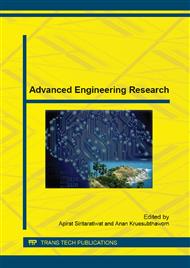p.276
p.280
p.284
p.288
p.292
p.296
p.300
p.304
p.308
Baseline Consideration for Lightning Location System Based on Magnetic Field Direction Finding to Determine Optimal Grid Cell of Lightning Flash Density Map
Abstract:
Lightning flash density map from lightning location system is primary for lightning protection. The baseline of lightning location system affects not only location accuracy, but also accuracy of lightning flash density. In order to obtain lightning flash density map, the different baselines were studied to determine optimum grid cell. This paper utilizes the capabilities of Matlab® software to simulate grid cell by using magnetic direction finding technique and Marquardt method. These baselines were generated between 150 km and 250 km. In addition, grid cells were created at spatial resolutions of 10 km to 50 km, and cloud-to-ground lightning strikes were randomly created at density, ranging from 1 to 10 strikes per square kilometer. The mean error values of lightning location system are obtained between 1.756 km and 2.885 km from baseline 150 km to 250 km. Size of optimal grid cells must be designed 21.8 km and 23 km for baselines 150 km and 250 km respectively.
Info:
Periodical:
Pages:
292-295
Citation:
Online since:
August 2015
Authors:
Price:
Сopyright:
© 2015 Trans Tech Publications Ltd. All Rights Reserved
Share:
Citation:


